
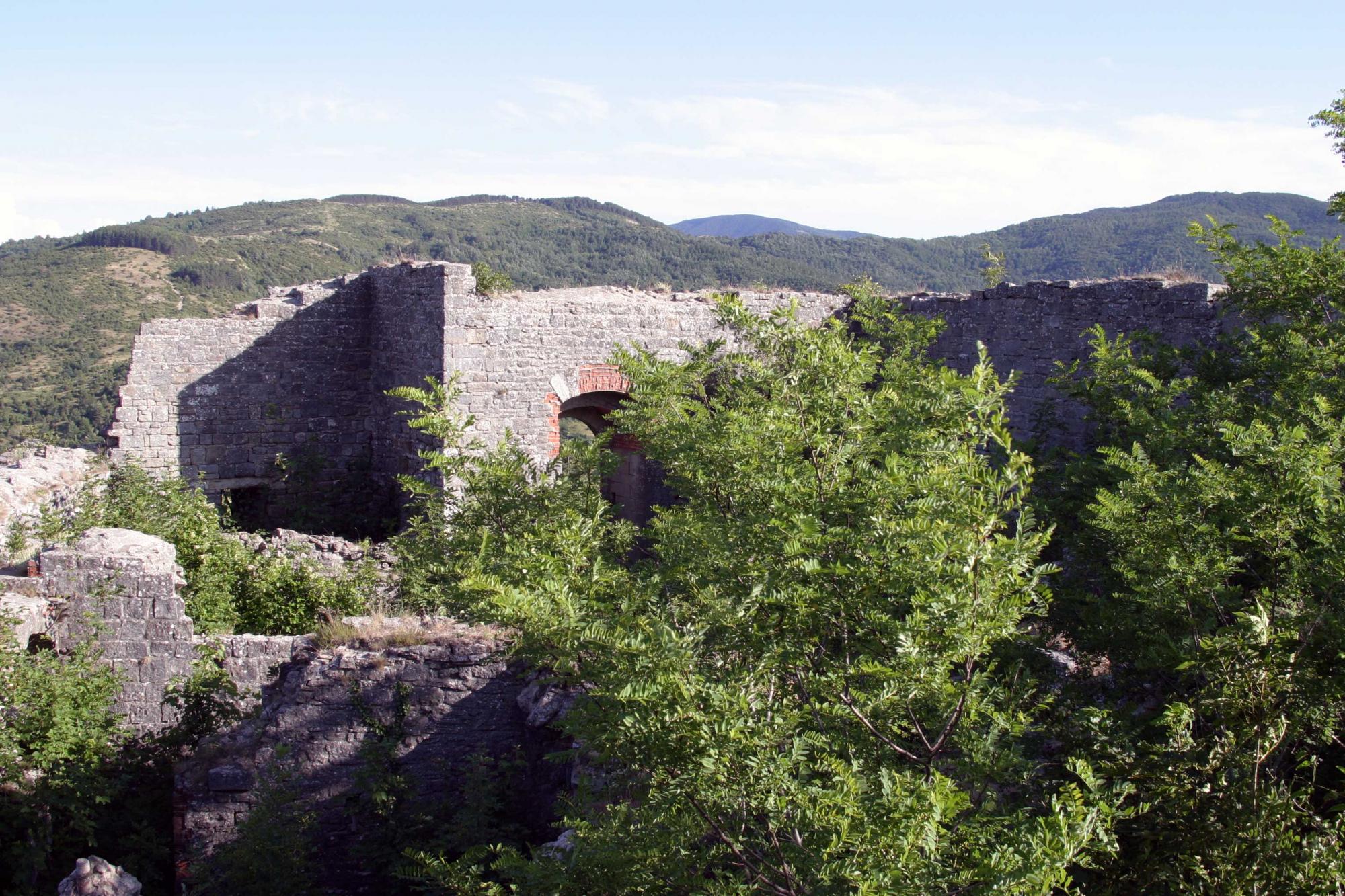

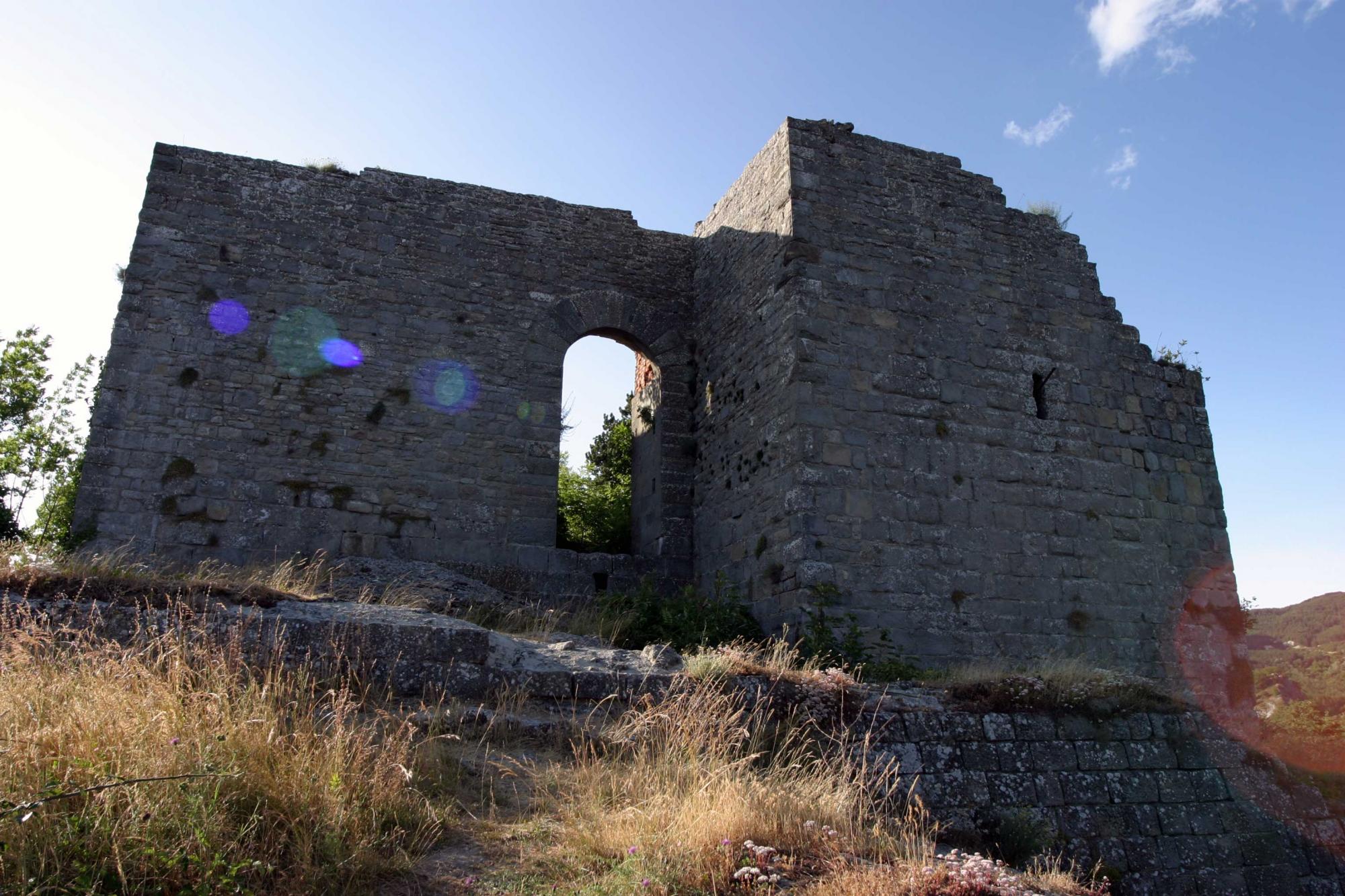
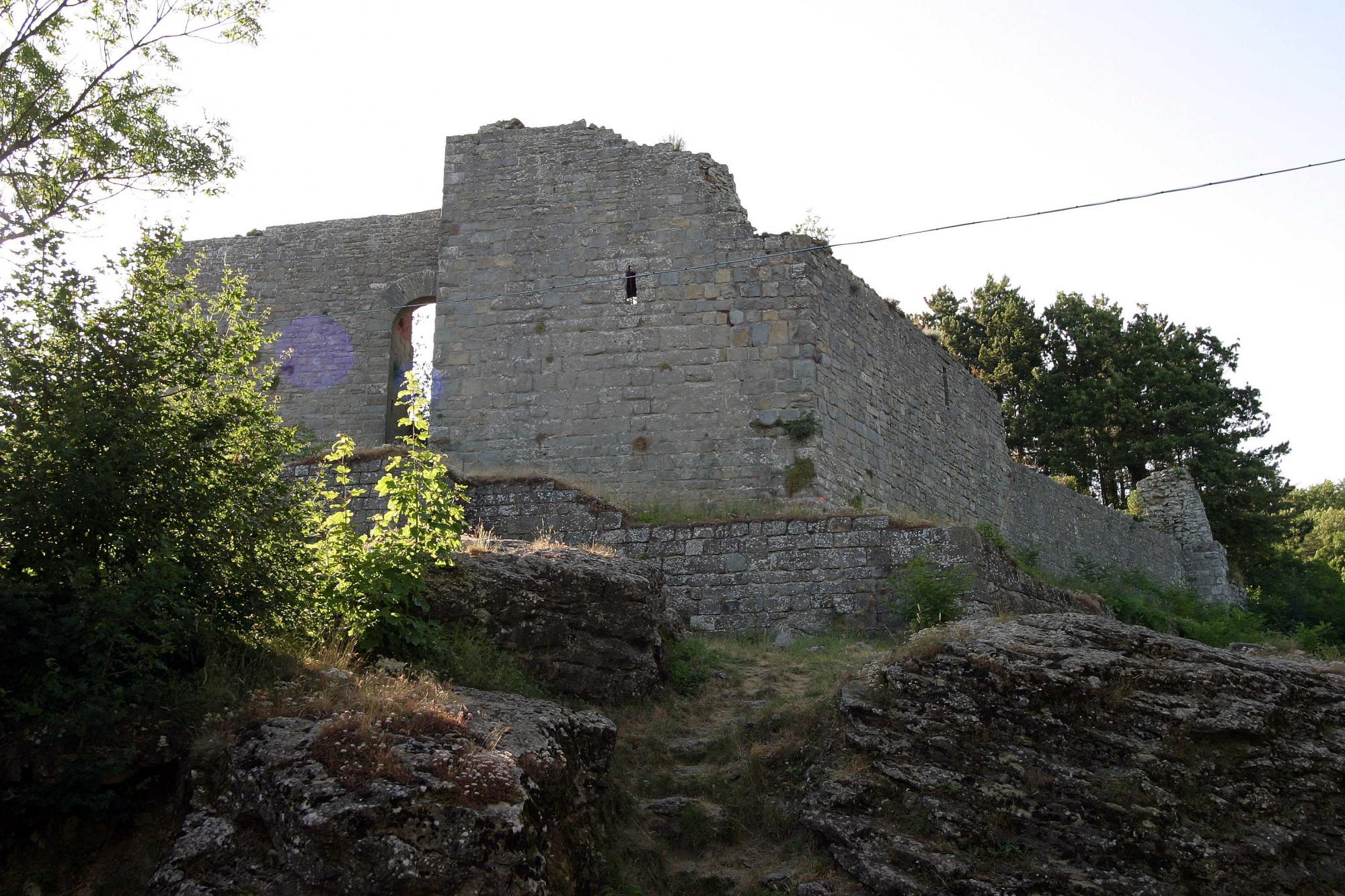
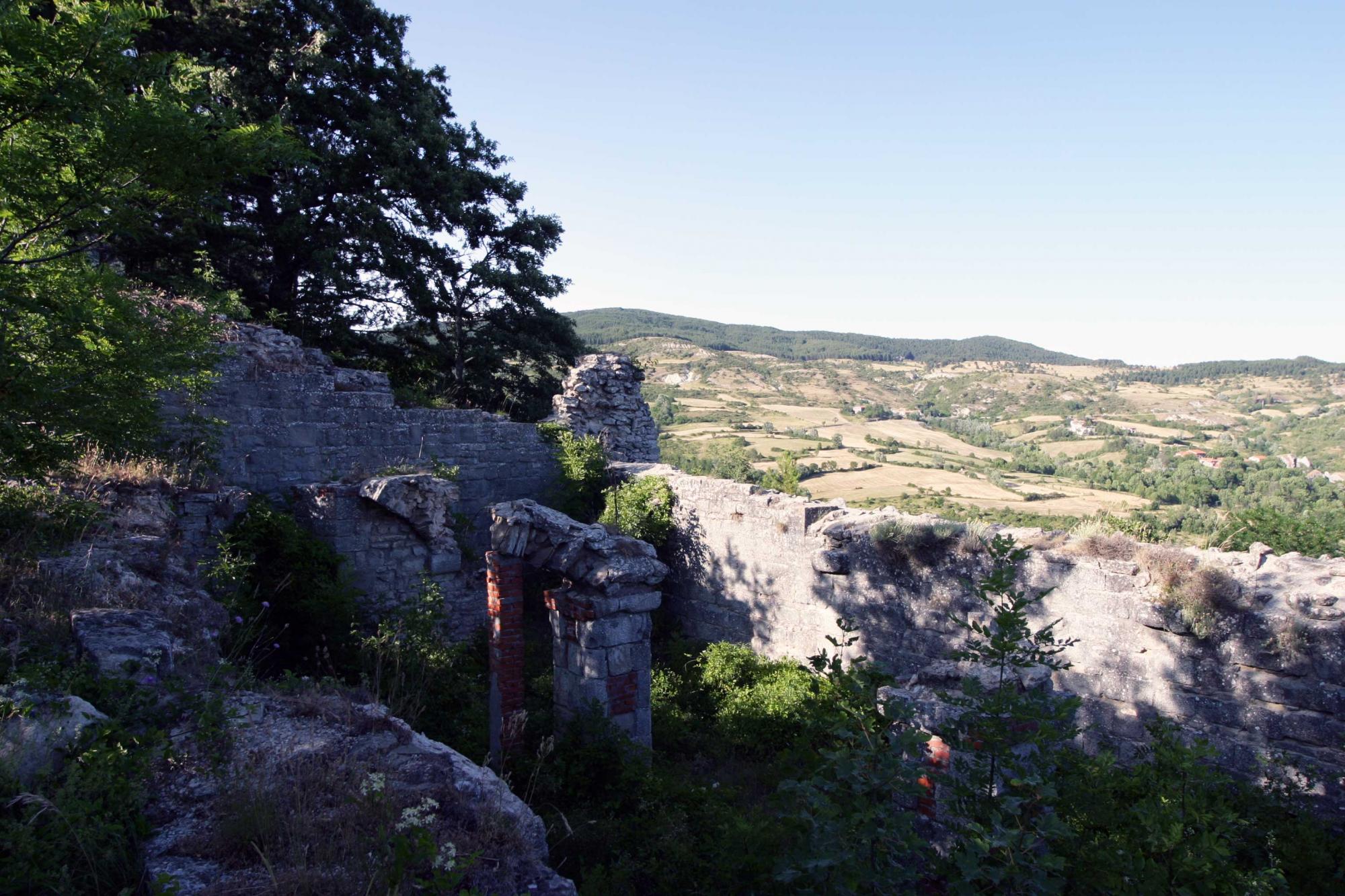
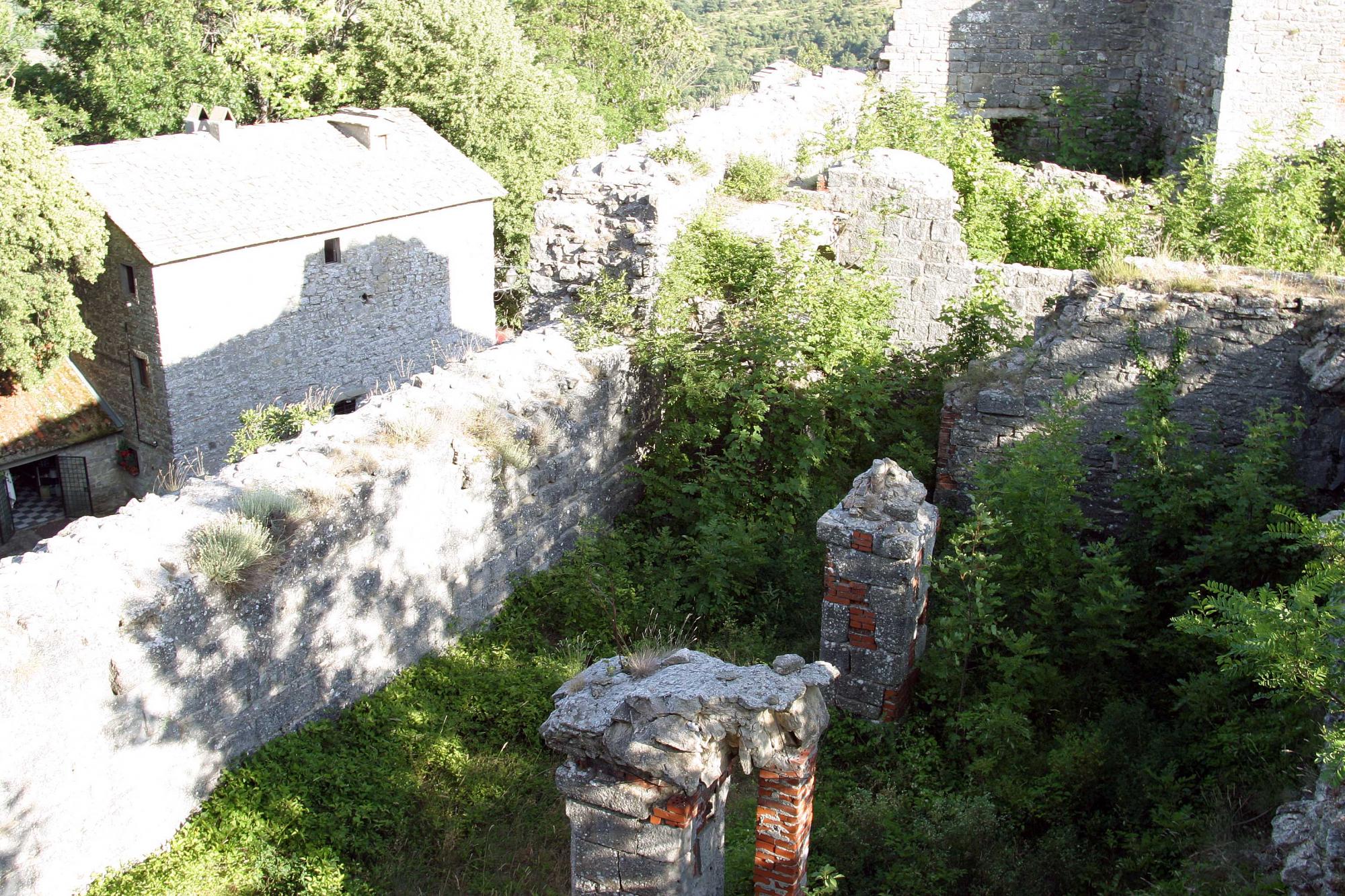
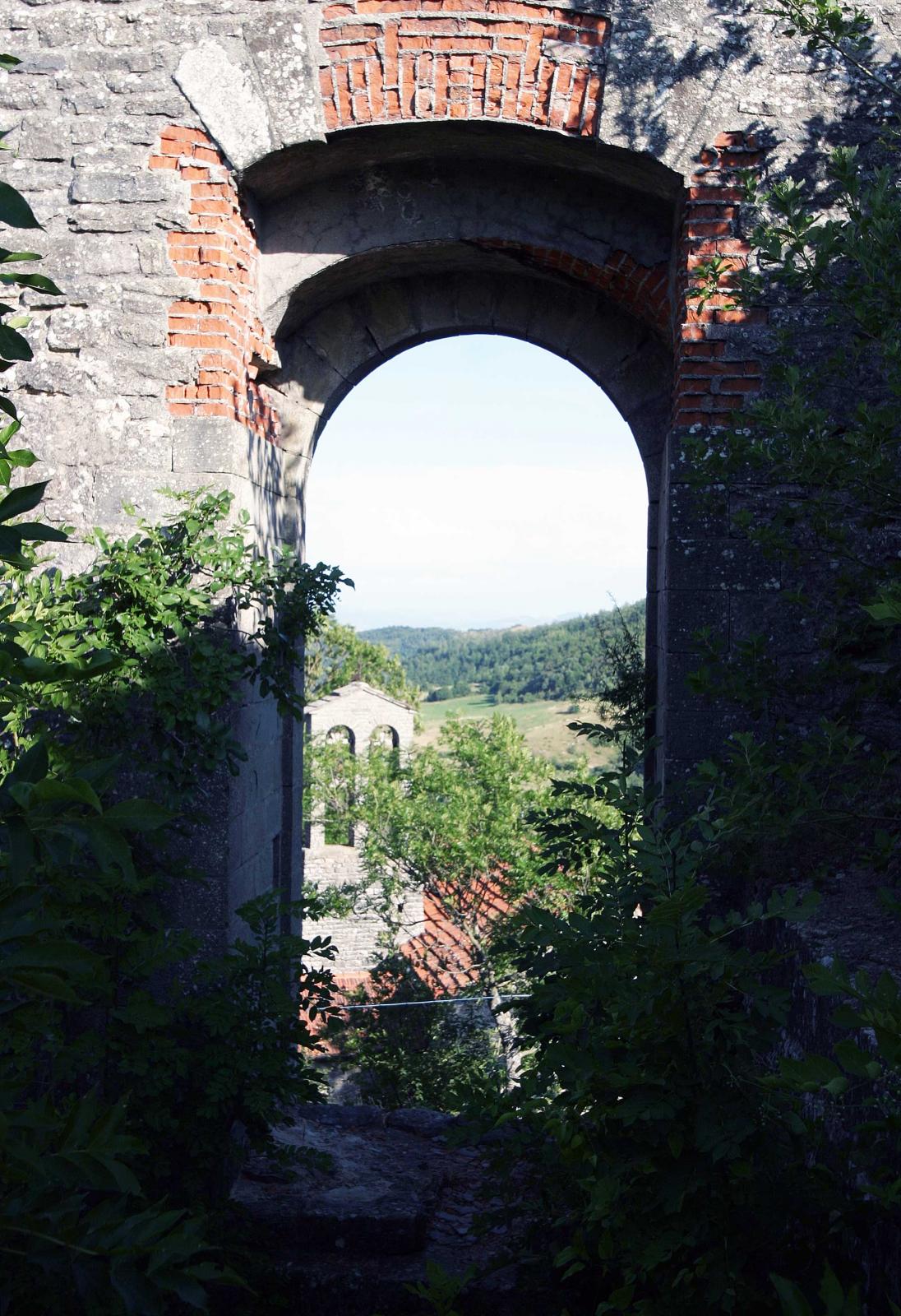
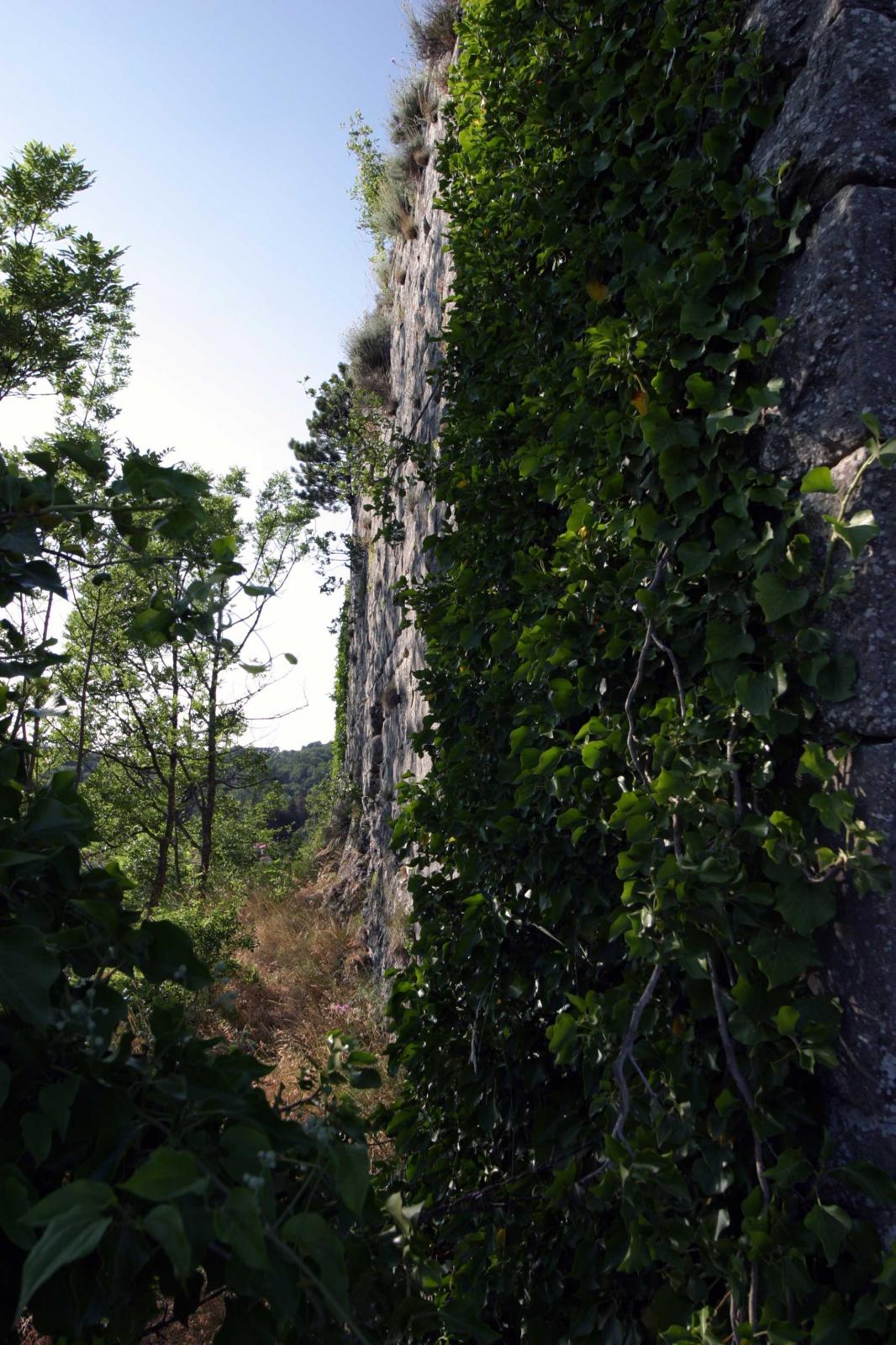









How to reach
Chiusi della Verna can be reached following the road SS71 Umbro-Casentinese: until Rassina and then continuing for Chitignano if coming from from Arezzo; taking the road SS208 at the height of Bibbiena coming from Florence.
History
The fortification, built with large squared blocks of clear stone (instead of the habitual dark stone of the other castles of this area, the Casentino), was in origin of great dimensions, with the shape of irregular quadrilateral in order to better adjust itself to the cliff, a tower on the main front, beside the gate, and the keep in the most elevated part. At least three sides of the castle are enough protected by the rocky crag, of which they seem the natural prosecution, at precipice on the valley.
The external walled curtain and the main gate are still in a good state of conservation. The inner part, now completely abandoned, had a first floor used as warehouse and stables and a second one for the family of the conestable and the others inhabitants of the castle. Nearby rises the ancient church of S.Michele Arcangelo, erected by the countess Giovanna Tarlati in 1385. Beside the church is located the ancient Podesteria, seat of the vicarage, object of several transformations in the course of the centuries. The ruins of the castle are fenced and the entry can be dangerous, mainly if you intend to turn all around the external walls.
The first notice goes back to the year 967, when Chiusi, situated at the center of the fief constituted from its territory, was confirmed under the dominion of Goffredo by the emperor Ottone. In 1213, Orlando Cattani, a descendant of Goffredo, donated to S.Francesco a part of its county with the Sacred Mount of the Verna. In 1324, the castle was subtracted to the Cattani by the bishop of Arezzo Guido Tarlati. In 1351, the countess Giovanna di S.Fiora, bride of Tarlato, lived in Chiusi.
Pier Saccone from Bibbiena stole the Rocca from her, but in 1360, Chiusi returned to the counts Cattani. In 1384, the Florentine Republic resumed all the castles of the peasantry of Arezzo and Chiusi, which were granted in fief to the counts Guidi di Bagno. In 1440, Niccolò Piccinino occupied the castle; later on, it was established here as the center of the Florentine Podesteria, which was then widened with the annexation of Caprese. Lodovico Buonarroti was Vicar in Chiusi (1474) for the Republic Florentine when his son Michelangelo born.